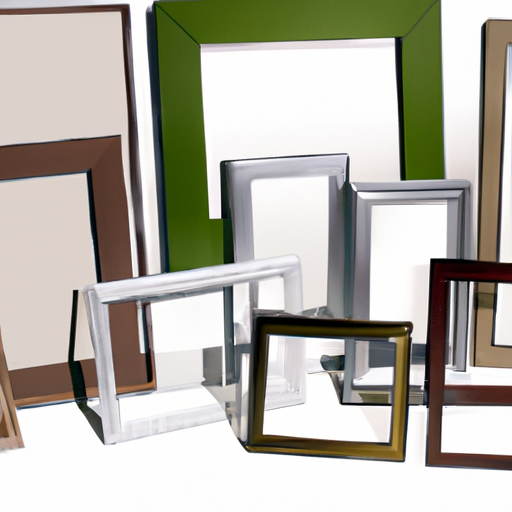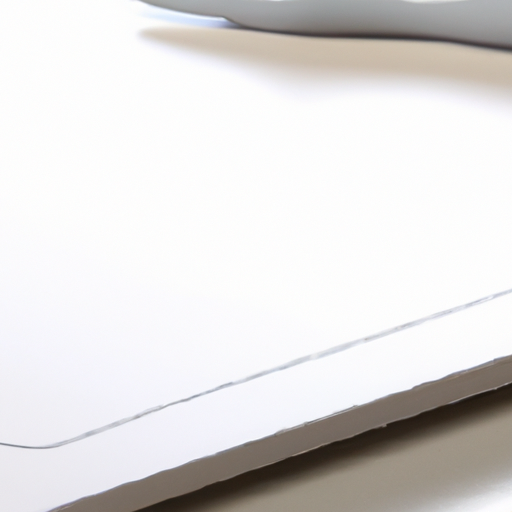So here’s the deal: we all know how crucial whiteboards are for brainstorming sessions, presentations, and collaborative work. But have you ever stopped to think about the different materials used for whiteboard frames? Sure, it may not be the first thing that comes to mind when shopping for a whiteboard, but the type of frame material can actually make a huge difference in terms of durability, functionality, and style. In this article, we’ll take a closer look at the various options for whiteboard frame materials, weighing their pros and cons to help you make an informed decision when it’s time for your next whiteboard upgrade.
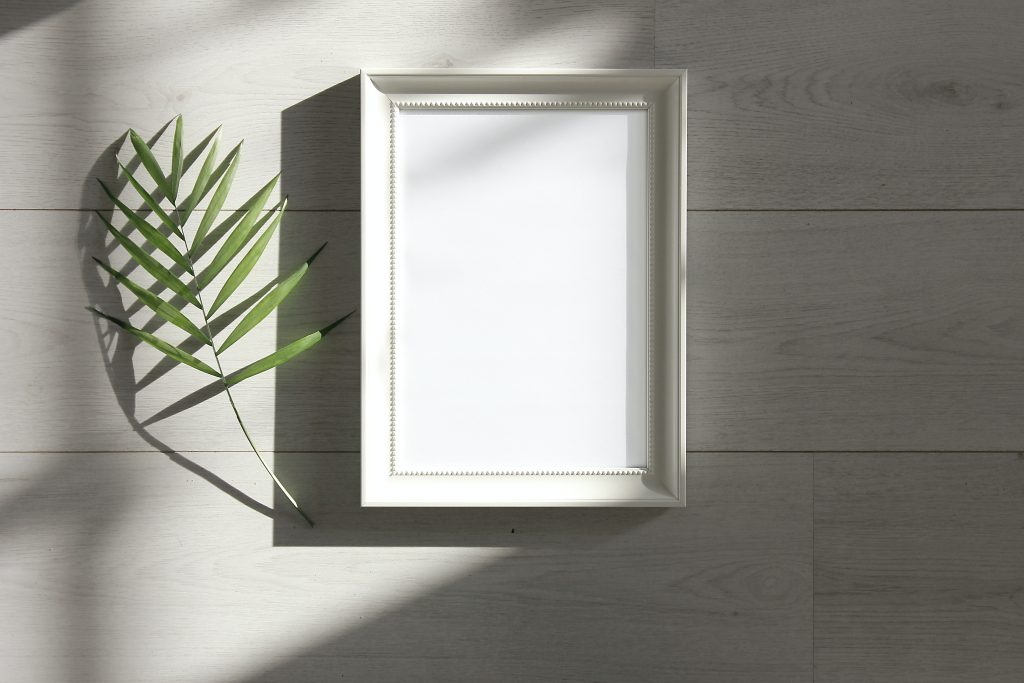
1. Steel frame
Steel frames are a popular choice for whiteboards due to their strength and durability.
1.1 Pros of steel frame
One of the biggest advantages of steel frames is their sturdiness. Steel is known for its high tensile strength, which means it can withstand heavy use and is less prone to warping or bending. This makes steel frames ideal for high-traffic areas such as classrooms, conference rooms, or offices where the whiteboard may be constantly in use.
Another benefit of steel frames is their longevity. Steel is highly resistant to corrosion, which means that a whiteboard with a steel frame will last for many years without rusting or deteriorating. This makes it a cost-effective choice in the long run, as it will require minimal maintenance or replacement.
Steel frames also provide a sleek and professional appearance. The clean lines and metallic sheen of a steel frame can add a touch of sophistication to any space. Additionally, steel frames are available in a variety of finishes and colors, allowing for customization and coordination with the existing decor.
1.2 Cons of steel frame
While steel frames offer many advantages, there are a few potential drawbacks to consider. One of the main disadvantages of steel frames is their weight. Steel is a heavy material, which means that whiteboards with steel frames may be more difficult to install or move around compared to frames made of other materials. This can be a consideration if portability is a priority for your whiteboard.
Another potential downside of steel frames is their susceptibility to scratches and dents. While steel is generally durable, it can still be susceptible to surface damage from sharp objects or heavy impacts. Although this may not affect the functionality of the whiteboard, it can impact its overall appearance.
2. Aluminum frame
Aluminum frames are another popular choice for whiteboards due to their lightweight nature and versatility.
2.1 Pros of aluminum frame
One of the main advantages of aluminum frames is their lightweight construction. Aluminum is a lightweight material, making whiteboards with aluminum frames easy to transport and install. This makes them an excellent choice for environments where the whiteboard may need to be frequently moved or repositioned.
Aluminum frames also offer durability and resistance to corrosion. While not as strong as steel, aluminum is still a robust material that can withstand daily use. It is also highly resistant to rust and can maintain its appearance over time. This makes aluminum frames a long-lasting option for whiteboards.
In addition to their functional benefits, aluminum frames offer aesthetic appeal. They have a sleek and modern look that can complement any space. Similar to steel frames, aluminum frames are available in a variety of finishes and colors, allowing for customization and coordination with the surrounding decor.
2.2 Cons of aluminum frame
While aluminum frames have many advantages, they also have a few limitations to consider. One potential drawback is that aluminum is not as strong as steel. This means that whiteboards with aluminum frames may be more susceptible to bending or warping with heavy use. However, in most standard environments, this is not a significant concern.
Another disadvantage of aluminum frames is their lower scratch resistance compared to steel frames. While aluminum is still relatively durable, it can be more prone to surface damage. This can affect the overall appearance of the whiteboard over time, especially in high-traffic areas where it may be more prone to accidental impacts or contact with sharp objects.
3. Wooden frame
Wooden frames offer a classic and timeless look for whiteboards, adding warmth and elegance to any setting.
3.1 Pros of wooden frame
One of the main advantages of wooden frames is their aesthetic appeal. Wood has a natural beauty and warmth that brings a touch of elegance to any space. Whether it’s a traditional office, a rustic classroom, or a cozy meeting room, a whiteboard with a wooden frame can enhance the overall ambiance and create a welcoming atmosphere.
Wooden frames also offer versatility in terms of design. Wood can be easily customized and modified to suit different styles and preferences. It can be stained or painted in various colors to match the existing decor or add a pop of contrast. Additionally, the grains and textures of different wood species can provide unique visual interest.
Another advantage of wooden frames is their ease of installation. Wood is a relatively lightweight material, making it easy to handle and mount on walls. This can be particularly beneficial when it comes to DIY installations or situations where the whiteboard needs to be frequently relocated.
3.2 Cons of wooden frame
Despite their aesthetic appeal, wooden frames do have a few drawbacks to consider. One of the main concerns with wooden frames is their susceptibility to moisture damage. Wood is a natural material that can expand or contract when exposed to changes in humidity or moisture. This can lead to warping or swelling, affecting the overall stability and appearance of the whiteboard.
Another concern is the durability of wooden frames. While wood can be treated and sealed to enhance its strength, it is generally not as durable as metal or plastic frames. Wooden frames may be more prone to scratches, dents, or other surface damages, especially in high-traffic areas. Regular maintenance, such as refinishing or repainting, may be required to keep the wooden frame in optimal condition.
4. Plastic frame
Plastic frames offer affordability and versatility, making them a popular choice for budget-conscious buyers.
4.1 Pros of plastic frame
One of the main advantages of plastic frames is their cost-effectiveness. Plastic is generally less expensive than metal or wood, making it a budget-friendly option for whiteboards. This can be particularly beneficial for organizations or individuals looking for an economical solution without compromising functionality.
Plastic frames also offer versatility in terms of design and customization. Plastic can be molded into various shapes and sizes, allowing for unique and creative frame designs. It is available in a wide range of colors, allowing users to personalize their whiteboards to match their preferences or brand identity.
Another benefit of plastic frames is their lightweight nature. Plastic is significantly lighter than metal or wood, making whiteboards with plastic frames easy to handle and transport. This can be advantageous in situations where portability is a priority or where the whiteboard may need to be frequently moved or repositioned.
4.2 Cons of plastic frame
While plastic frames have their advantages, there are a few disadvantages to consider. One potential drawback is their durability. Plastic is generally not as durable or long-lasting as metal or wood. Over time, plastic frames may become brittle, fade in color, or develop surface cracks. This can impact the overall appearance and functionality of the whiteboard, particularly in high-traffic areas.
Another concern with plastic frames is their environmental impact. Plastic is derived from non-renewable resources and is not biodegradable, contributing to environmental pollution and waste. However, there are eco-friendly options available, such as frames made from recycled or biodegradable plastics, which can help mitigate this issue.

5. Glass frame
Glass frames offer a sleek and modern aesthetic, elevating the style and sophistication of any space.
5.1 Pros of glass frame
One of the main advantages of glass frames is their visual appeal. Glass has a clean, elegant, and contemporary look that can instantly enhance the aesthetics of a room. It reflects light, creating a sense of openness and brightness, which can make the space feel larger and more inviting.
Glass frames also offer versatility in terms of design. They are available in various thicknesses, colors, and finishes, allowing for customization and integration with different interior styles. Additionally, glass frames can be combined with other materials, such as wood or metal, to create unique and eye-catching designs.
Another advantage of glass frames is their durability and longevity. Glass is a highly durable material that is resistant to scratches, stains, and fading. It is also easy to clean and maintain, requiring only a quick wipe with a glass cleaner to keep it looking pristine. This makes glass frames a practical choice for high-traffic areas or environments where cleanliness is crucial.
5.2 Cons of glass frame
While glass frames offer many benefits, there are a few potential drawbacks to consider. One concern with glass frames is their fragility. Glass can be prone to breaking or cracking with heavy impacts or accidental collisions. This makes them less suitable for areas with a higher risk of potential damage, such as busy classrooms or crowded conference rooms.
Another consideration is the weight of glass frames. Glass is a heavier material compared to other frame options, which can make installation more challenging and time-consuming. It may require additional support or specialized hardware to ensure proper mounting and stability.
6. Ceramic frame
Ceramic frames offer a unique and artistic touch to whiteboards, allowing for creative expression and customization.
6.1 Pros of ceramic frame
One of the main advantages of ceramic frames is their aesthetic appeal. Ceramic tiles come in a wide range of colors, shapes, and patterns, allowing for endless possibilities when it comes to design. They can be arranged in intricate mosaics or used as accent borders, adding a decorative element to the whiteboard.
Ceramic frames also offer durability and resistance to scratches or surface damage. Ceramic tiles are known for their robustness and ability to withstand wear and tear. They are highly resistant to stains, making them easy to clean and maintain. This makes ceramic frames suitable for both functional and decorative purposes.
Another benefit of ceramic frames is their thermal resistance. Ceramic tiles have excellent heat resistance, which means they can withstand high temperatures without warping or deteriorating. This makes them a suitable choice for whiteboards placed in environments with fluctuating temperatures or near heat sources.
6.2 Cons of ceramic frame
Despite their artistic appeal, ceramic frames do have a few drawbacks to consider. One potential concern is their weight. Ceramic tiles can add considerable weight to the whiteboard, which may require additional support during installation. This can make them more challenging to handle or move compared to frames made of lighter materials.
Another consideration is the fragility of ceramic frames. While ceramic tiles are robust and resistant to surface damage, they can still be prone to cracking or breaking if subjected to heavy impacts. Care should be taken to avoid accidental collisions or mishandling, particularly during transportation or installation.
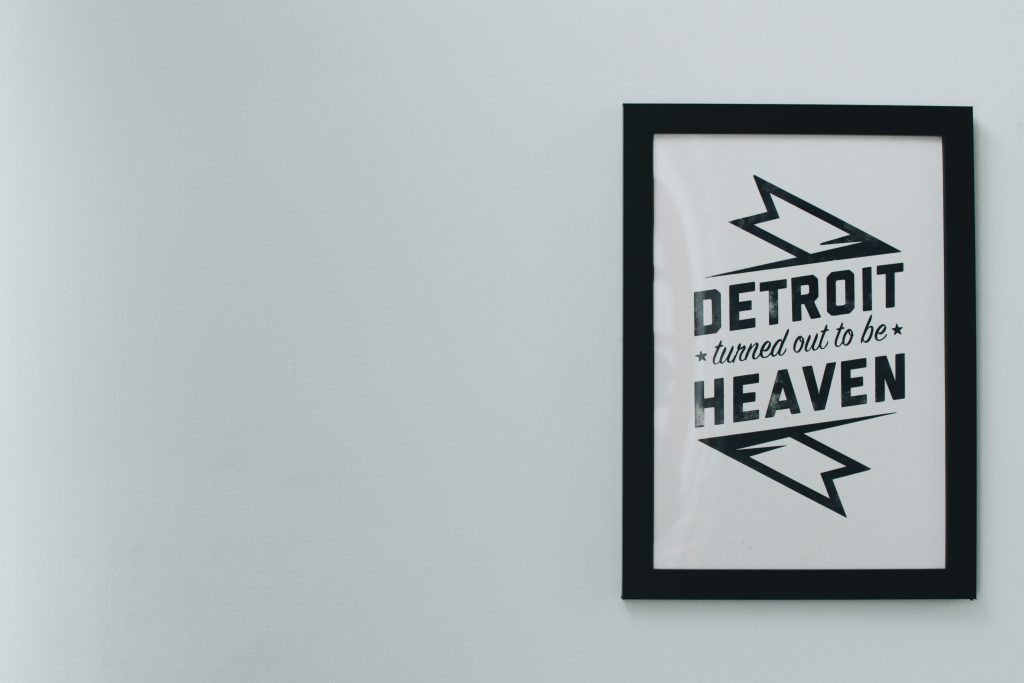
7. Composite frame
Composite frames, also known as engineered wood, offer a blend of affordability, durability, and style.
7.1 Pros of composite frame
One of the main advantages of composite frames is their affordability. Composite frames are typically made from a combination of wood fibers and resins, making them more cost-effective compared to solid wood frames. This makes them a budget-friendly option for those looking for the warmth and appearance of wood without the higher price tag.
Composite frames also offer durability and resistance to moisture. Unlike solid wood frames, composite frames are engineered to be more resistant to warping, swelling, or rotting when exposed to humidity or moisture. This makes them suitable for environments with fluctuating temperature or higher moisture levels, such as classrooms or kitchens.
Another benefit of composite frames is their versatile design options. They can be molded or shaped into various styles, allowing for customization and coordination with different decor styles. Composite frames can mimic the look of different wood species or even incorporate veneers, providing the appearance of real wood at a lower cost.
7.2 Cons of composite frame
While composite frames have their advantages, they also have a few limitations to consider. One potential drawback is their susceptibility to scratches and surface damages. While composite frames are generally durable, they may still be prone to surface abrasions or dents over time. This can impact the overall appearance of the whiteboard, particularly in high-traffic areas.
Another consideration is the environmental impact of composite frames. While they can be a more sustainable option compared to solid wood frames, composite frames are still made from a combination of synthetic materials. It is important to choose products made from eco-friendly or recycled materials whenever possible to reduce the carbon footprint and minimize waste.
8. PVC frame
PVC frames offer affordability, versatility, and resistance to moisture, making them suitable for various environments.
8.1 Pros of PVC frame
One of the main advantages of PVC frames is their cost-effectiveness. PVC is a low-cost material, making whiteboards with PVC frames more affordable compared to frames made from other materials. This can be particularly beneficial for those on a budget or looking for an economical solution for their whiteboard needs.
PVC frames also offer versatility in terms of design and customization. PVC can be easily molded or shaped into various styles and profiles, allowing for unique and creative frame designs. It is available in different colors and finishes, enabling users to match their whiteboard to their desired aesthetic or brand identity.
Another benefit of PVC frames is their resistance to moisture. PVC is a non-porous material, meaning it does not absorb water or moisture. This makes it an excellent choice for environments with higher humidity levels, such as bathrooms or kitchens, where the whiteboard may be exposed to moisture or splashes.
8.2 Cons of PVC frame
While PVC frames have their advantages, there are a few considerations to keep in mind. One potential drawback is their susceptibility to discoloration over time. PVC frames may fade or yellow when exposed to prolonged sunlight or harsh environmental conditions. This can affect the overall appearance of the whiteboard, particularly in areas with high sun exposure.
Another concern is the environmental impact of PVC frames. PVC is a synthetic material derived from non-renewable resources and has been associated with negative environmental effects during its manufacturing process. However, there are eco-friendly alternatives available, such as frames made from recycled or bio-based PVC, which can help minimize the environmental footprint.
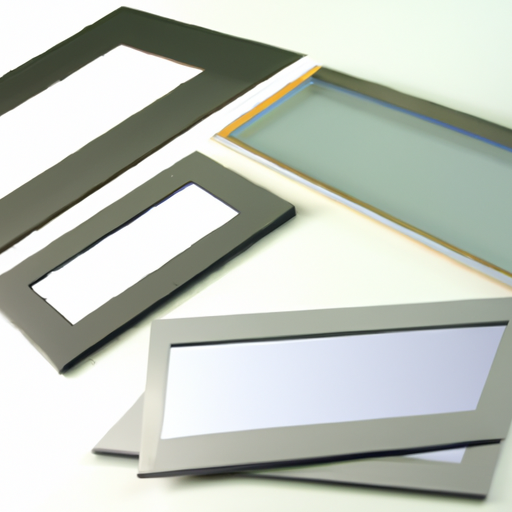
9. MDF frame
MDF (Medium Density Fiberboard) frames offer affordability, versatility, and ease of customization, making them a popular choice for whiteboards.
9.1 Pros of MDF frame
One of the main advantages of MDF frames is their affordability. MDF is a cost-effective alternative to solid wood frames, making it a budget-friendly option for those looking for a wood-like appearance without the higher price tag. This makes MDF frames accessible to a wider range of customers.
MDF frames also offer versatility in terms of design. MDF can be easily cut, shaped, or molded into various frame profiles and styles. It can be painted, stained, or veneered to achieve different finishes or simulate the appearance of different wood species. This allows users to customize their whiteboards to match their desired aesthetic or interior theme.
Another benefit of MDF frames is their stability and resistance to warping or swelling. MDF is fabricated using a combination of wood fibers and resin, which makes it less susceptible to changes in humidity or temperature compared to solid wood. This means that MDF frames can maintain their shape and structural integrity over time.
9.2 Cons of MDF frame
While MDF frames have their advantages, there are a few considerations to keep in mind. One potential drawback is their susceptibility to moisture damage. MDF is not as moisture-resistant as other frame materials, such as PVC or composite. Excessive exposure to moisture or humidity can cause MDF frames to swell or deteriorate, affecting their overall stability and appearance.
Another concern is the weight of MDF frames. While not as heavy as solid wood frames, MDF frames can still add considerable weight to the whiteboard. This may require additional support during installation or make the whiteboard more challenging to handle or transport compared to frames made from lighter materials.
10. Acrylic frame
Acrylic frames offer a sleek and modern appearance, providing a contemporary touch to any environment.
10.1 Pros of acrylic frame
One of the main advantages of acrylic frames is their visual appeal. Acrylic has a high transparency, similar to glass, which creates a modern and sophisticated look. It reflects light and offers a glossy finish, adding a touch of elegance to any space. Acrylic frames can effortlessly enhance the aesthetics of a room, creating a sleek and stylish atmosphere.
Acrylic frames also offer durability and resistance to impacts. Acrylic is a strong and shatter-resistant material, making it less prone to breakage or cracking compared to glass frames. This makes them a suitable choice for areas with a higher risk of potential damage, such as classrooms or public spaces. Acrylic frames are also lightweight, which facilitates handling and installation.
Another benefit of acrylic frames is their UV resistance. Acrylic has excellent UV-blocking properties, protecting the whiteboard from fading or discoloration caused by prolonged exposure to sunlight. This ensures that the whiteboard maintains its original appearance for a longer period, even in brightly lit environments or sun-drenched spaces.
10.2 Cons of acrylic frame
While acrylic frames have their advantages, there are a few considerations to keep in mind. One potential drawback is their propensity for scratching. Acrylic frames are more susceptible to surface scratches compared to glass or other frame materials. It is important to handle acrylic frames with care and avoid using abrasive materials when cleaning to preserve their clarity and appearance.
Another concern is their static nature. Acrylic frames tend to accumulate static electricity, which can attract dust or debris. This means that acrylic frames may require more frequent cleaning to maintain their pristine appearance. However, this can be easily managed with regular dusting or the use of anti-static cleaning products.
In conclusion, the choice of a whiteboard frame material depends on individual preferences, budget considerations, and the specific requirements of the environment it will be used in. Steel frames offer strength and durability, aluminum frames provide lightweight versatility, wooden frames offer a classic and timeless aesthetic, plastic frames offer affordability and customization options, glass frames offer a sleek and modern appearance, ceramic frames provide artistic customization, composite frames offer a blend of affordability and durability, PVC frames offer affordability and resistance to moisture, MDF frames offer affordability and customization options, and acrylic frames offer a sleek and contemporary style. It is important to carefully weigh the pros and cons of each frame material to select the one that best suits your needs and preferences.
